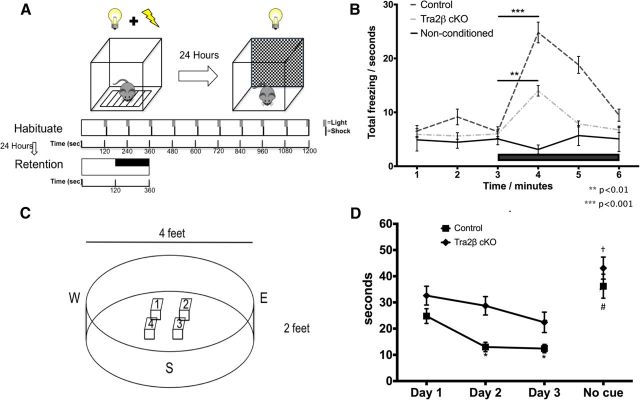Figure 8.
Tra2β animals can be conditioned to associate light with a shock and find a hidden platform using a visual cue. A, Pavlovian fear conditioning design. Animals are conditioned on Day 1 by pairing an unconditioned stimulus (shock) with a conditioned stimulus (flashing light). On Day 2, animals are placed in a novel context, 180 s of darkness is followed by 180 s of flashing light (black bar). B, There is a significant increase in the amount of freezing behavior in wild-type (black dashed line) and Tra2β cKO (gray dashed line) mice in the 60 s after the onset of flashing light compared with the previous 60 s of darkness; control (non-conditioned) animals (black line) do not have a significant response after the onset of light. C, Schematic of water maze design indicates four stage positions and three entry points. Days 1 and 2 consist of four trials each day; the platform is labeled with a visual cue. On Day 3, the first two trials the stage is labeled with a visual cue and the next two trials the cue is removed. D, Tra2β cKO and control animals find the hidden platform significantly better each day and when the cue is removed, the animals find the cue significantly worse. *p < 0.001 vs control Day 1; #p < 0.05 vs control Day 3; †p < 0.05 vs cKO Day 3.

